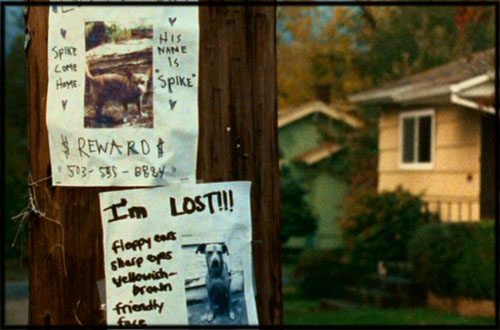Use a dog — or a team of trackers — to find a dog lost in the woods. Even a month after he’s missing.
You can’t go to Harriman State Park — or any state park, for that matter — without seeing signs showing lost dogs, pets that have wandered into the woods and not returned, hiking dogs that bolted from the Appalachian Trail. But did you know there are two services that will help you find a lost dog, when your dog has wandered off into the woods or into an unfamiliar neighborhood? Here’s what I’m doing if my dog is lost in the woods.

Losing a dog in Harriman State Park (all 46,000 acres of it) can be a daunting, frightening thing. Use the network of Dogs Finding Dogs to bring him home.
Beyond the obvious admonition — KEEP YOUR DOG ON A LEASH! — and the other less obvious but equally-important “make sure they’re microchipped and labeled, with a cell phone number on the tag”, I’d like to offer a couple of suggestions that might help a dog lost in the woods to find his owner, and his way back home.
Before the Dog Has Bolted Into the Woods:
1. Get yourself — your dog, that is — a collar with a flashing LED light. Don’t put a glowstick on the dog, as this could be a dangerous way for him to get caught on sticks and stumps, and glowsticks have a brief lifetime of glowing before they go out.
2. Even better: get a Tagg system that uses GPS to track your dog. This is an easy-to-use device that’s attached to your pet’s collar, and allows you to monitor his movements on your Iphone and to make sure he’s getting enough exercise from the dog walker when you’re away. You’ll be able to pinpoint his location exactly, should he wander off into the woods or down the street. The device is a little under $100.00, and has a monthly subscription fee of $7.95 (There are other devices out there, but Tagg seems to consistently get the best ratings for GPS trackers of this type.)
Too Late for Tracking! Dog Gone:
Don’t feel bad if you don’t have a GPS tracker for your pet. According to Dogs Finding Dogs, less than half have so much as a collar and identification:
“Believe it or not, in 41/2 years we have not come across one person who owned a GPS collar. Maybe 30, 40 percent (of dogs) are microchipped. And for another probably 40 to 50 percent, you’ll be lucky if they have tags or a collar. So folks just aren’t plugging into the technology that’s out there.”
1. Bad news for the dog, but that quote also contains a piece of good, under-the-radar news (and this is what I’m doing if my dog is lost in the woods): Dogs Finding Dogs is a Baltimore-area nonprofit that uses tracker dogs to find other lost dogs. Their tracking teams, and their network of other qualified teams around the country, can be deployed to aggressively and persistently sniff out and find lost dogs, or even stolen ones (a stolen dog will lead tracker dogs to the same dead-end spot). DFD uses trained tracking teams with an over 95% success rate to search for lost pets across the country — an amazing service when you consider they do this for a suggested donation of $175.00.

Dogs Finding Dogs has a national network of tracker dogs that can bring your pet safely home if he’s lost in the woods.
Dogs Finding Dogs advises that you don’t waste any time in contacting them if your dog is missing in the woods. Dogs, like all animals (except sloths and turtles) are constantly on the move, and a team can be quickly deployed.
But they also have a smell that lasts three to four weeks depending on the weather or forest floor material, and that’s enough of an opportunity for keen-nosed trackers to find them.
Another service, Find Toto, will, within minutes of your online request order, place as many as 10,000 automated phone calls (“Toto Alerts”) to your neighbors in the vicinity of where your pet was last seen. This paid service is about as simple as it gets: you’ll enter your dog’s information on their website, choose a package (Plan A is the least costly and will get you 250 phone calls), and wait.
Another piece of advice I received from a professional tracker is to revisit the place where you lost your dog and, if it’s getting late and you cannot stay, leave water and some items of your own clothing. This will help a dog find your scent, and it’s possible he or she will stay in the area, expecting you to return.
Finally, don’t overlook online listing services like PetKey; you can post your lost pet on the directory. PetKey ranks high in search engines for its category, so there’s a better chance the person who finds your pet will see your post.
Additionally, consider the convenience of mobile vets, which can be invaluable during stressful times like these. If your dog is found and requires immediate veterinary care, a mobile vet can come directly to your location, providing essential services without the added stress of transport. This can be especially important if your pet has been exposed to any dangers while lost, ensuring they receive prompt attention and care in the comfort of familiar surroundings.
This is crucial not only for routine check-ups but also in more sensitive situations, such as dog euthanasia Melbourne, where emotional comfort is paramount for both the pet and the owner. Mobile vets are equipped to handle a variety of situations on-site, ensuring that pets receive the necessary care without the added anxiety of being in a clinic.
Their presence can provide peace of mind, knowing that professional help is just a call away, allowing pet owners to focus on what matters most—ensuring their furry companions feel safe and loved during stressful times.
It would be an unsettling experience to lose a dog in Harriman State Park — or any dense forest — and common sense would tell anyone who enters the forest to at least have identification on their pet, should they be found. But this isn’t always the case, and when a dog has poor recall skills, the danger of disappearing is even greater.
To request a Dogs Finding Dog team in your area, call them at (410) 908-6374. Find Toto has a variety of price packages; you can find them at Find Toto’s website.
Both services are worth keeping in mind when you see “lost pet” signs near Harriman State Park.




You can find these tracking collars at
http://www.trainingcollarstore.com
Was the lost dog in the photo descibed as having floppy ears ever found
Be certain that your dog has access to water.